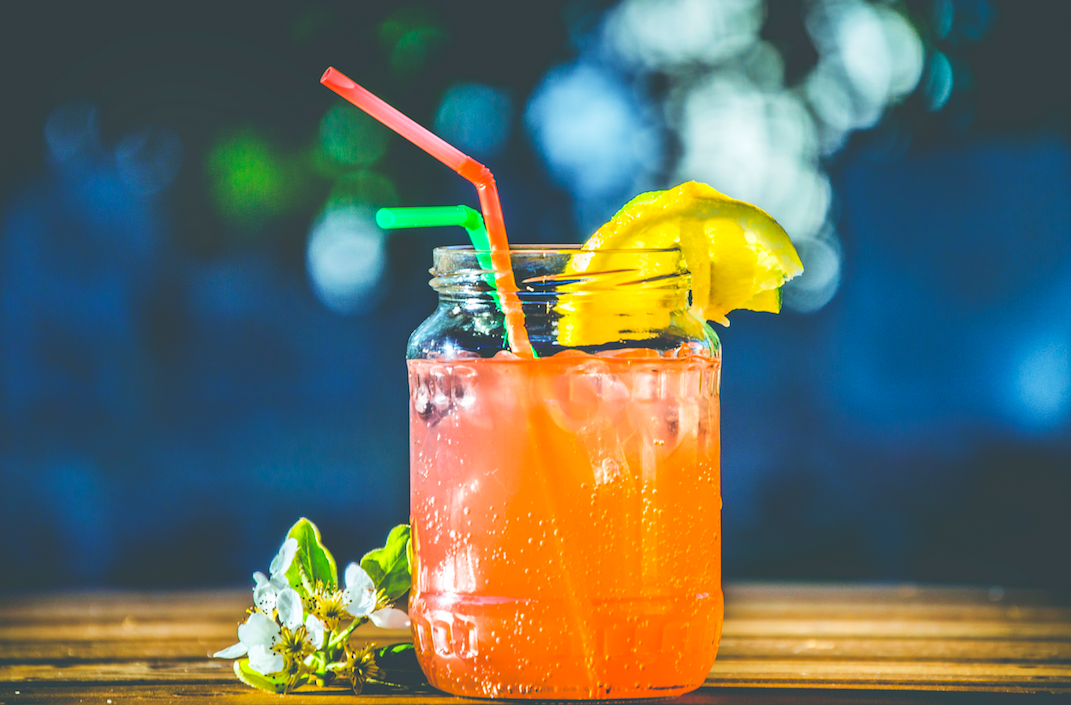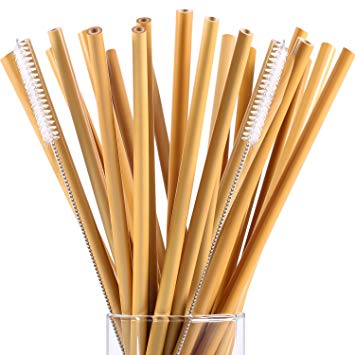Deadly Facts About Plastic Straws
The Environmental Impact of Plastic Straws – Facts, Statistics, and Infographic

A small, plastic straw – It’s something that comes with most beverages that we order, from soft drinks to even a glass of water. How often do you use straws with your drink?
Though at first this small straw may not seem like a lot, when its usage is added up, plastic straws create a big problem for the environment.
And, with the USA using 500 million straws every day (enough straws to circle around the Earth 2.5 times!), that’s a lot of trash and potential litter.
Updated Statistic: In the year of 2017, Americans used about 390 million plastic straws each day. This data comes from from the market research company, Freedonia Group.
In this infographic and article below, learn about the impact of plastic straws on the environment, and how you can make a big difference just by rejecting the use of straws.
Not So Fun Facts
1. Plastic Straws can’t be easily Recycled
Straws are most commonly made from type 5 plastic, or polypropylene
Although type 5 plastic can be recycled, it isn’t accepted by most curbside recycling programs. When plastic straws aren’t recycled, they end up in landfills, or even worse, polluting our oceans.
Make sure you check your local municipality website to see if plastic straws can be recycled in your area or simply refuse to use plastic straws with your drinks by drinking from the lid or using a metal/bamboo straw.
2. Plastics do not Biodegrade, and never fully Degrade

In order to understand the environmental impact of straws, it is important to know the difference between biodegrading and degrading:
Biodegrading is when an item can be naturally broken down and digested by micro-organisms, and then naturally recycled into new organic molecules and life.
On the other hand, degrading is just the process of breaking down into smaller pieces. When plastic degrades, the bulk of the plastic will seem to disappear – However, what’s really happening is the plastic is breaking into smaller, invisible pieces that will always still be on Earth.
With that being said, plastic straws take up to 200 years to degrade, but will never be fully off the Earth, as plastics are not biodegradable. To make matters worse, the degrading of plastic releases chemicals that are toxic to wildlife and the environment.
3. Straws are littered very often, and harm Ocean WildlifeWhenever there is an ocean coastline cleanup, plastic straws never fail to make it on the list of one of the most found ocean litter.
And, as of early 2018, data from Ocean Conservancy’s TIDES system shows us that straws/stirrers are the 11th most found ocean trash in cleanups, making up about 3% of recovered trash.
Update: Straws are currently the 8th most found ocean trash in cleanups by quanity (January 2019).
All these straws and plastic polluting our oceans is having a negative impact on marine life. Take for example the video below, where researchers off the coast of Costa Rica remove a plastic straw that had been embedded in the nostril of an Olive ridley sea turtle.
It’s likely that the sea turtle accidentally swallowed the straw, and then had it stuck up its nostril while trying to cough the straw out.
Straws are also especially dangerous to seabirds, as they can be easily picked up and swallowed, suffocating and choking the bird. In fact, over 1 million seabirds die each year from ingesting plastic.
Take Action: Combat our Single-Use Plastics Problem
Plastic straws and other single-use plastics are a non-essential part of our life. Yet, they cause so much damage to the environment.
The simplest way to reduce plastic pollution is to reject the use of single-use plastics, like straws.
For example, the next time you go to a restaurant, make sure you request for your drink without a straw. Many restaurants serve straws with drinks even without a request, so make sure you ask for “no straw” before you order.
Another way to combat this problem is to use reusable straws. These reusable stainless steel or glass straws can be used, cleaned, and reused over and over again.
Good reusable straws are durable and easy to clean, as they will come with a special cleaning brush. They will usually cost around $1 to $2 each when bought in a pack easily found on Amazon and other retailers, look for metal or bamboo straws.

About The OneLessStraw Campaign:
In Nov of 2016, One More Generation founders Olivia (14) and her brother Carter (16) launched their global OneLessStraw Pledge Campaign in an effort to help clean up our environment and educate people on the harms of using single use plastic straws.
Since the launch of the campaign we have had over 3,000 people from over 44 countries around the world sign our on-line pledge form stating that “they promise not to use a single use plastic straw for at least 30-days”.
We realized that reducing our plastic footprint could be very easy to do; we just need to say ‘NO’ to single-use plastics such as straws.
Sources: